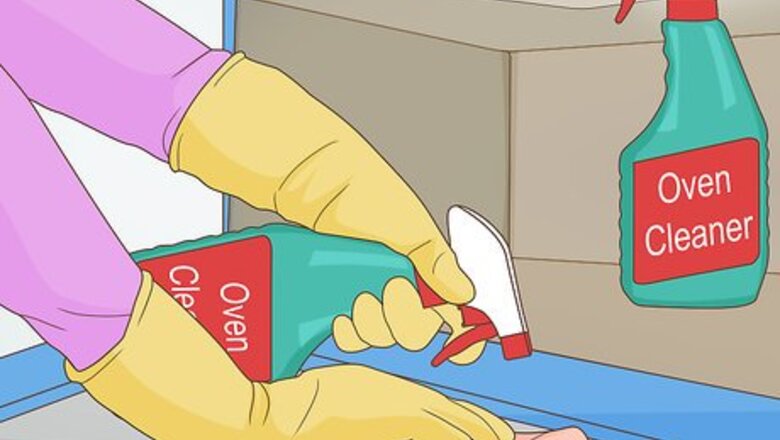
views
Cleaning the Kitchen
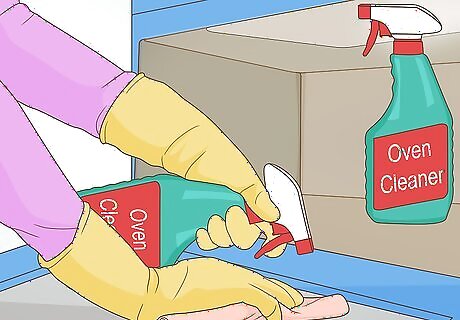
Clean the oven and stove. Buy one or two cans of oven sprayable cleaner and read the safety directions carefully, as many oven cleaners require protective equipment (gloves & goggles) and strong ventilation. Place newspaper in front of the oven, slightly underneath the door or drawer, to protect your floor from dripping cleaner. Evenly apply both cans to the inside of the oven, the grates, and the broiler sheets. If you want to avoid the chemicals in oven cleaners, use a dilution of 100g baking soda in 1 liter (0.3 US gal) of water and spray onto the surfaces. For a dirtier oven, increase the amount of baking soda so that the solution is more of a paste than a liquid. Leave for one hour, then use an ice scraper to remove the burnt carbon and spray any remaining in the oven. Repeat the process until the oven is completely clean. Make sure the oven is turned off before starting to clean.
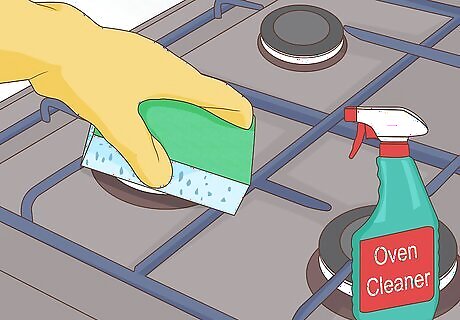
Clean up the stove. Use an abrasive cleaner and tough sponge to scrub at any spots on the stovetop. For stubborn spots, spray some oven cleaner and let it sit. Clean the vent above the stove and be certain that the light bulb in the overhead hood is in working condition. Using a sponge and paper towels, wipe down all surfaces. Rinse with clean water. Soak drip pans and other removable parts in hot water with dish soap for at least 30 minutes, then scrub them. Repeat as necessary. Make sure the gas and stove are turned off before you start to clean.
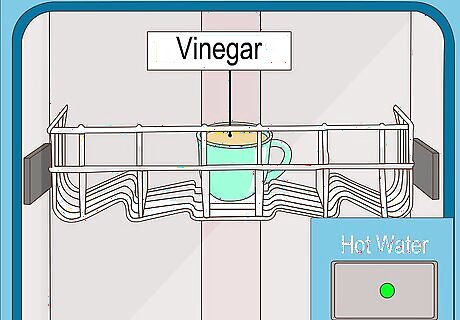
Disinfect the dishwasher. Pull out the bottom rack and clear out the drain area. Empty the dishwasher, then fill a dishwasher-safe cup with vinegar, place it on the top rack and run a cycle with the hottest water setting. This will sanitize and wash away grime in the dishwasher, as well as remove any odors. When the cycle finishes, remove the cup and sprinkle baking soda around the bottom of the dishwasher. Run through another short cycle on the hottest water setting. This will remove any remaining stains and odors.
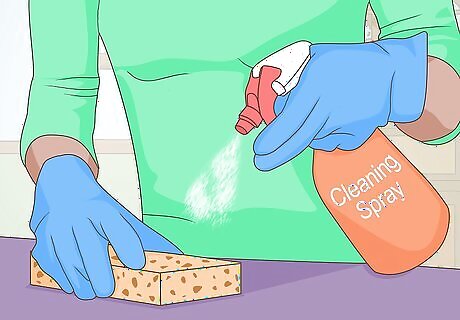
Use a rag and cleaning spray to clean drawers and counter surfaces. Unplug and remove all appliances and items left in the drawers. Make sure to get into the corners of drawers and countertops.
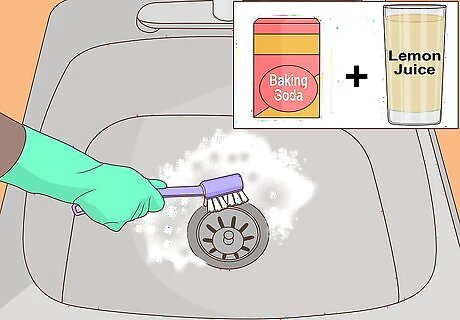
Wash out the sink. Use a gentle soap, soft cloth and warm water on the faucets, drain and outer rim. Run hot water down the drain. Use a toothbrush to scrub around the edges of the sink. For a deeper clean on the surface and drain of a stainless steel sink, mix baking soda and lemon juice together and scrub it onto the surface, then pour the rest down the drain. For a porcelain sink, spray the sink with hydrogen peroxide and let it sit for at least 15 minutes, or up to a few hours. The longer you let it sit, the more stains it will remove. Rinse away with warm water, scrubbing if needed to remove further stains. Avoid cleaning the sink until you’re sure you won’t have to use it again.
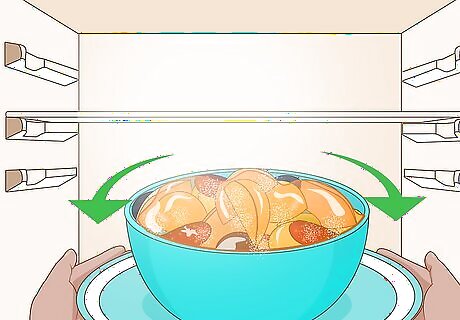
Remove all the food from your refrigerator. Give away food that will go bad, like milk or meat, to a neighbor, and store or throw away the rest. This will allow you to defrost and clean the refrigerator without anything in the way.
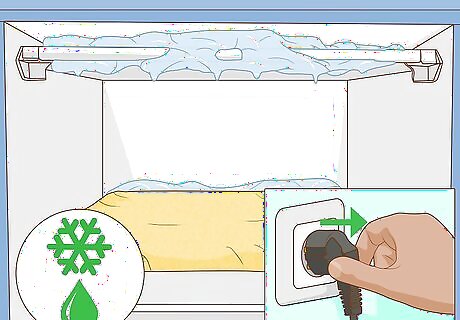
Unplug the refrigerator and let it defrost. Pad the inside with newspapers or towels and lay some on the floor around the bottom of the refrigerator to catch any water runoff. Let refrigerator and freezer defrost for several hours and dry the interior completely before you start cleaning it to prevent mold from growing.
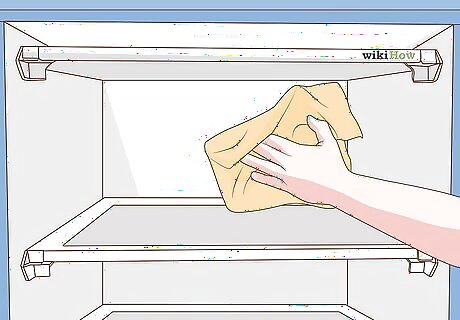
Clean the freezer. Use a rag or sponge with soapy water to clean the interior and the rubber door seal. Wipe it down one last time with a clean rag or paper towel.
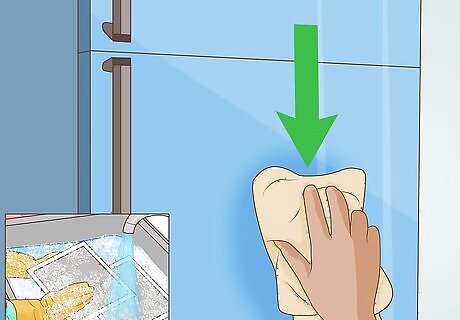
Clean the refrigerator. Scrub down the exterior, starting on the top and working down. Pull out the refrigerator shelves and wash them with soap and water, leaving them out to air-dry afterwards. As the shelves are drying, clean out the interior of the refrigerator with a clean rag.
Cleaning the Bathroom
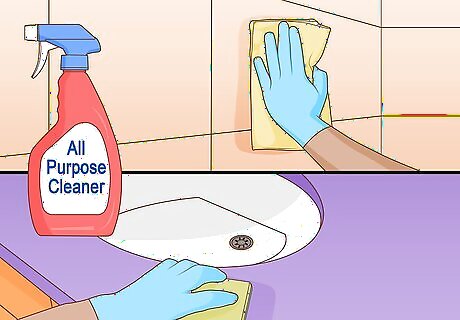
Wipe down the walls, counters and ceiling with all-purpose cleaner. Use a damp rag or sponge, or a mop if you have trouble reaching into high corners. Use a stepstool or ladder if necessary. Bathroom paint is typically semi-gloss, so it should be fine to get it wet, but avoid scrubbing the walls or using abrasive cleaners.
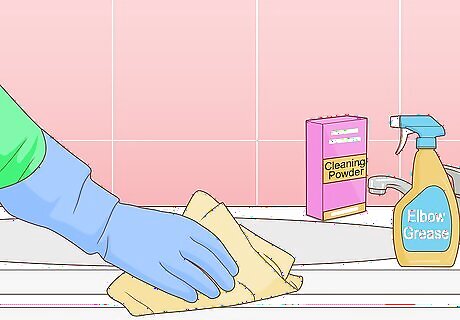
Scrub the shower and tub. Use a cleanser or cleaning powder and elbow grease, starting at the top of the shower or tub and moving down to the floor. If you have tile on the floor of the shower, use a toothbrush and cleaning agent to scrub down the grout. Clean out the drain with a drain claw or chemical drain cleaner.
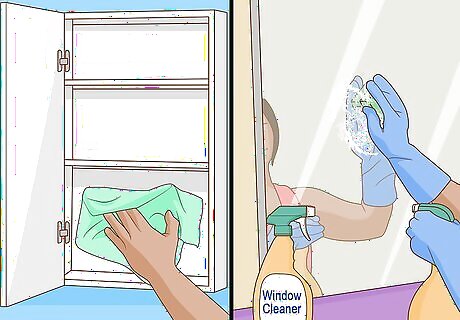
Clean the drawers, mirrors and windows. Remove any toiletry items still left inside the cabinets or vanity and wipe the areas clean with a damp rag. If you have lots of small pieces of grit or dirt, try using a vacuum hose. For the windows and mirror, use a window cleaner and a clean rag to get rid of any water stains or dirt. Remember to clean in the window tracks as well.
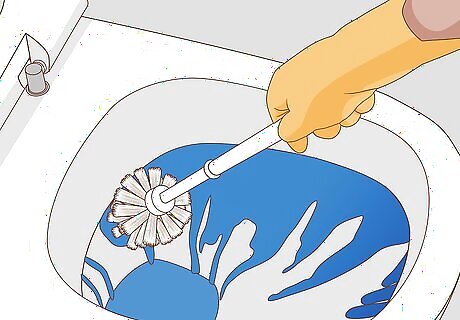
Clean the toilet. Put on clean rubber gloves and wipe off the exterior with a damp, hot sponge. Squirt toilet cleaner along the inside of the toilet’s rim and scrub down the bowl with a toilet brush. Flush it all down when you’re done.
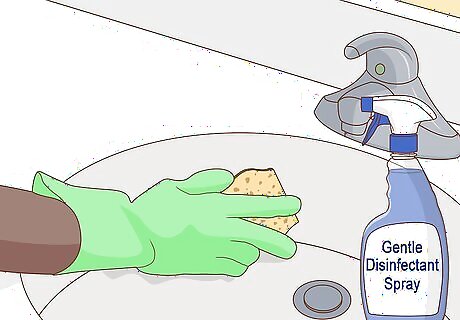
Wash the bathroom sink. Use a gentle disinfectant spray and a soft rag, or clean a ceramic sink naturally with a bit of lemon juice or vinegar. For tougher stains, shake some baking soda onto the area and scrub it gently with a sponge.
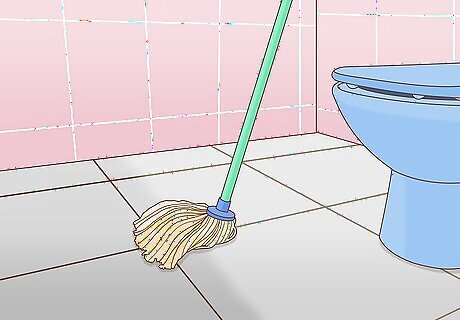
Mop the floors. If your bathroom is small, clean the floor by hand with a wet rag. If it’s larger, use a small mop. To get into the grout between the tiles, use a toothbrush or small brush.
Cleaning the Bedrooms and Living Room
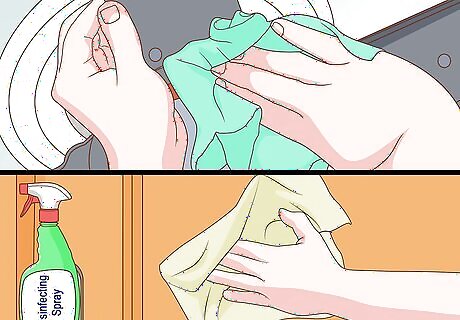
Wipe down ceiling fans, furniture, and walls. Use a disinfecting spray and a rag to dust off ceiling fans and the tops of doors and windows, and clear out any cobwebs you see. To clean painted walls, use a damp rag and wipe lightly to avoid damaging the paint. Use a ladder or stepstool if necessary. Don't forget to clean the walls and shelves in your closet, as well.
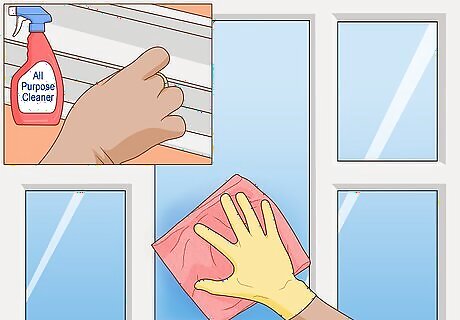
Wash the windows. Open them up and clean the tracks first, spraying with an all-purpose cleaner and using a sponge to get into the crevices. Close the window, then spray a window cleaner and wipe down with a paper towel repeatedly, until the towel comes back clean. Finally, wipe the surface once more with a clean, dry towel to avoid making streaks.
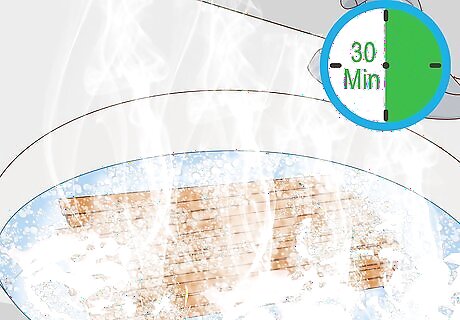
Clean the window blinds by soaking them in warm, soapy water. Remove the blinds and place them in a bucket or sink of warm water with dish soap. Let them sit for half an hour, then drain the water, rinse them and hang them to dry. This will save you the effort of cleaning the blinds by hand.
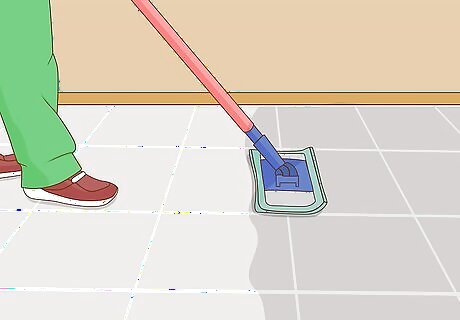
Clean the floors if you’re done using the room. Spot clean tough stains with a spray-on carpet cleaner first, then vacuum if you have a carpet. Use a broom and mop or damp sweeper for hardwood or tile. This doesn't need to be done by a professional cleaning company unless your apartment complex requires it. If you need to patch holes in the carpet or flooring, either leave the holes or hire a professional. You may make the problem worse if you attempt to do it yourself.
Cleaning the Exterior
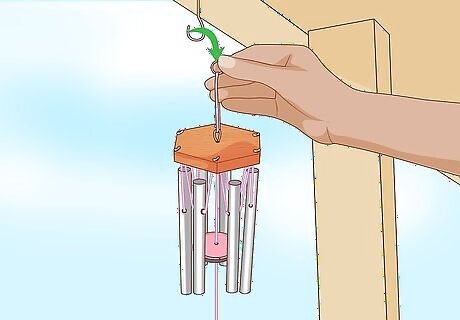
Remove any items you’ve left outside. This might include hanging decorations like chimes or bird feeders, children’s toys, or personal deck chairs.
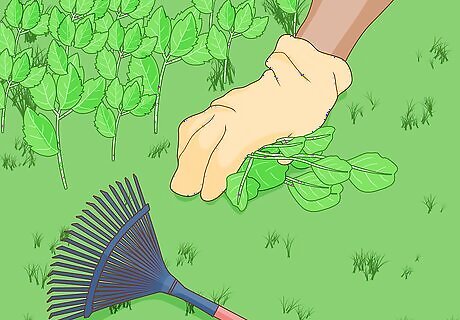
Cut the grass and pull the weeds if you have a yard. If you finish cleaning the interior of the house early, focus on the yard, cleaning up fallen leaves and pulling any large weeds. The inside of the house should be your priority, but you’ll get bonus points from your landlord for taking care of the yard as well.
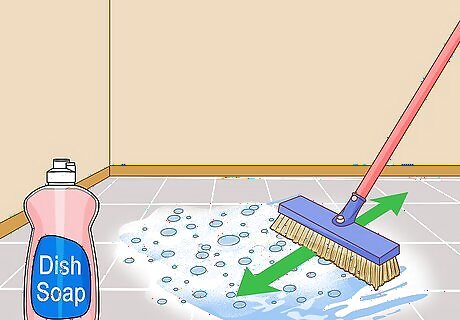
Sweep and hose down the porch or balcony. Scrub porch steps with soap and a heavy-duty brush. For a deeper clean on a concrete patio, squirt some dish soap onto the cement and scrub it into the concrete with a broom, then rinse it off again with the hose. For a stone deck, use a gentler solution of one cup of brown soap or soap crystals in a bucket of water and pour it over the patio, scrubbing it in with a broom.
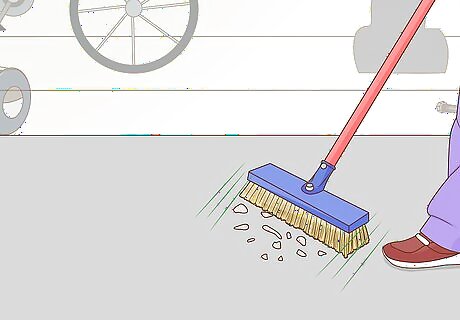
Sweep out your garage. Remove any remaining items stored there and sweep the ground thoroughly. Open the garage door and spray down the floor, aiming your hose toward the open garage door than the house.
Doing One Last Sweep
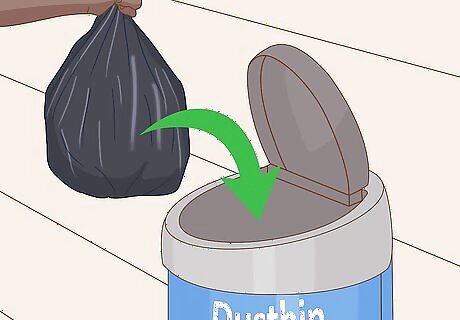
Take out the trash. Check under the sink and in the bathroom and bedrooms so you don’t miss any bags.
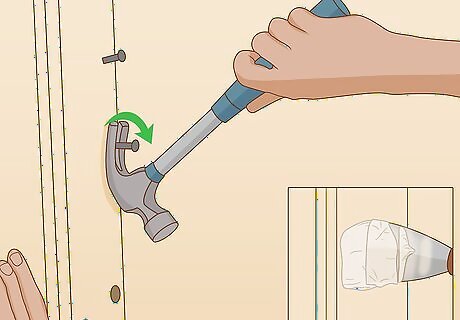
Remove nails, screws and tacks from the walls. You can use tools like a hammer or cat’s paw, or carefully pull out loose nails with your hands. Patch up any holes by putting a small amount of lightweight spackle on your finger or a putty knife and smoothing it onto the hole. Wipe away excess with your finger and let it dry for an hour.
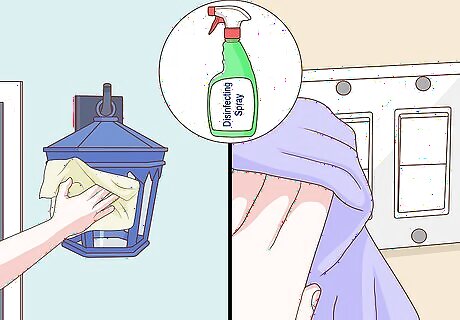
Carefully clean all light fixtures, switches, and outlets. Wipe off any fingerprints or dirt marks with a rag and some disinfectant cleaner.
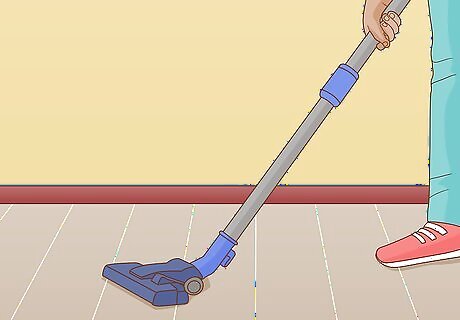
Mop or vacuum the whole house. Start from the furthest point of the house and work your way to the front door so that you don’t walk on the clean floor.
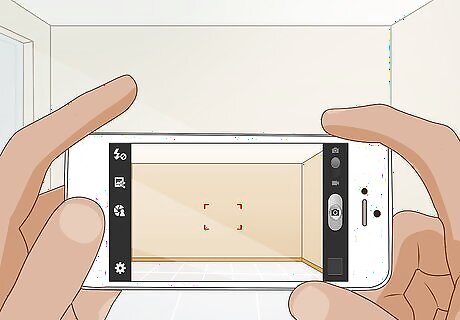
Take a picture of the cleaned, emptied apartment. This will prove that the apartment is clean and in good repair if the landlord or new tenant reports a problem early on. Make sure your camera or phone records the date and time that the picture was taken.




















Comments
0 comment